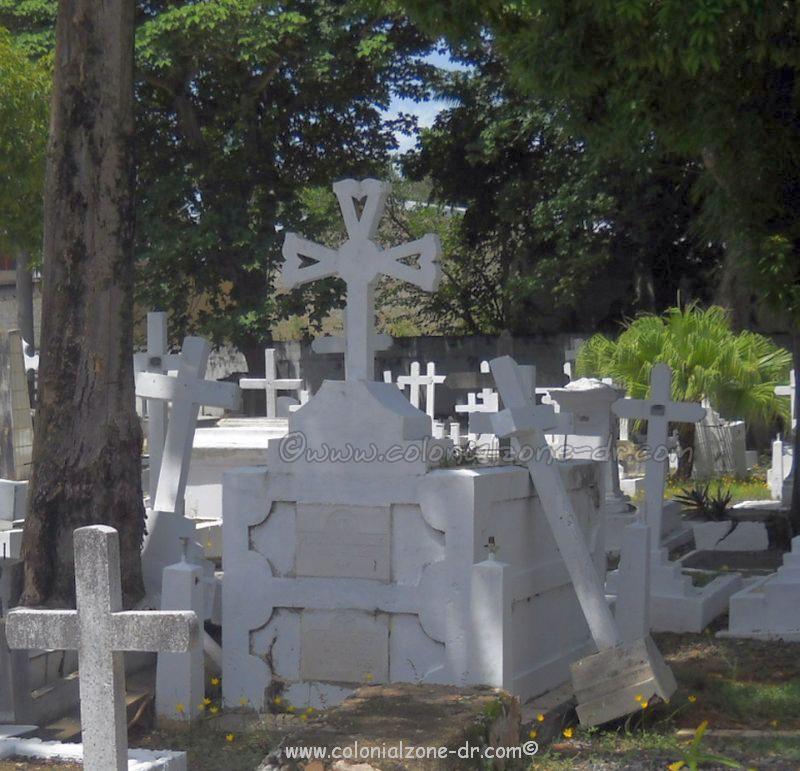Cementerio Nacional de la Avenida Independencia/ National Cemetery on Avenue Independencia
The Cementerio Nacional on Ave. Independencia, Santo Domingo, is the first national cemetery in the Dominican Republic. They inaugurated it during the Haitian occupation by Haitian President Jean Pierre Boyer, August 29, 1824. The cemetery has been closed since 1965. The last persons interred there were constitutional soldiers who died during the civil war.

This large gated cemetery, with an area of 16,000 square meters and 3,275 graves, has been around for over 500 years. Surrounded by a wall, it was a commonplace to execute people. María Trinidad Sánchez and Antonio Duvergé were both executed here.

Persons Buried in the Cemetery
Buried beneath the soil is history in abundance. Yet we will never know all who are buried in this disorganized resting place as many of the graves are not marked and have been destroyed by time and looters.

Buried in the Cementerio Nacional are many of the founders and the people who created Santo Domingo. There are people who died because of different plagues that spread throughout the country. Many of those interred here are children and infants. Represented here are the dead from hurricane San Zenón that took. They have laid many races and nationalities to rest in this bleak but interesting place. There are people from the Haitian occupation buried here with their tombstones written in French. Buried here are casualties from many wars and conflicts that occurred in the Dominican Republic including, The War of Restauración, Annexation to Spain, The War of Independence, The Intervention of the US Marines (6 Marines are buried here). There are tombs of many of the Dominican Republic Presidents here including Francisco Gregorio Billini Aristy, El Padre Billini and José Núñez de Cáceres (1772-1846).
This link has a list of all the people interred at the Cementerio Nacional de la Avenida Independencia. Censo de Tumbas en el Cementerio Viejo de Santo Domingo de la Av. Independencia.

The history of Professor Luisa Ozema Pellerano de Castro.
Ignored Historical Site
The Cementerio Nacional de la Avenida Independencia was declared a Patrimonio Cultural/ Cultural Patrimony historical site in 1987. It is still highly ignored by the Dominican people. Street people can be seen sleeping on pieces of cardboard outside the gates at night. There are rats scurrying along doing who knows what in the dark cemetery.
There was a proposed restoration of the National Cemetery in July 2012 that never happened. Story on the Colonial Zone News Blog.
Passing by in the daylight one can always see dogs inside the gates. Sleeping on a grave. Could it be the grave of its master? One day I saw a dog lying atop a grave chewing on a large bone. Makes one think…

I urge everyone to visit this interesting yet sad cemetery. Take a walk, view the tombs and the strange grave markers from times past. But, please only go in the daylight hours and be cautious of your surroundings.
I made a picture slide show of the Cementerio Nacional with many pictures and information of this Historical National Monument.

Location:
Go to the beginning (west) of the Conde at Independencia Park. Turn left (south) walking in front of the park. Take the first road to the right (south), Ave. Independencia (at the end of Arz. Nouel the street name changes), and continue walking up this street (away from the Colonial Zone). The cemetery is 2 blocks up on the left. Located in Ciudad Nueva between Av. Independencia, Calle Canela, Calle Padre Billini and Calle Carrerasm












